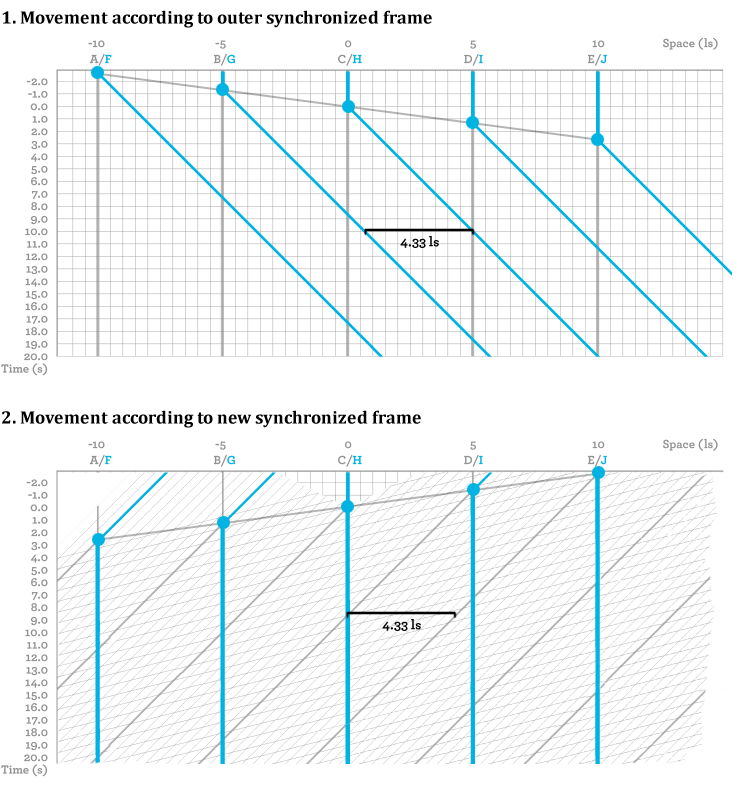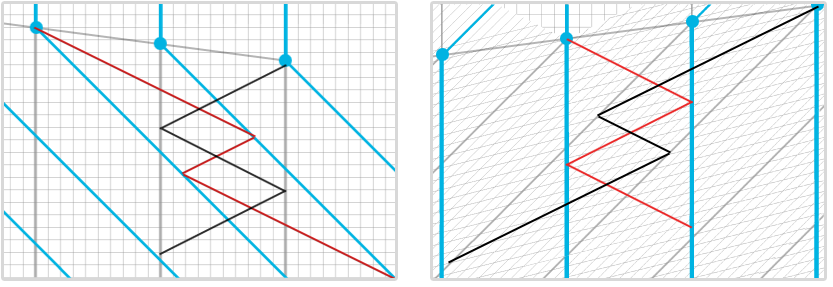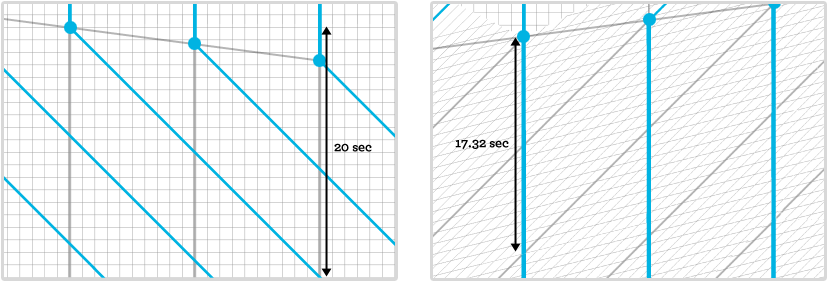3.4 Mutual measurable relativistic effects
In the previous sections concerning time dilation and length contraction , we have discussed two effects that appear to be non-mutual, although in a truly relativistic universe, there is no preferred frame of reference. How is this possible? Two frames of reference that encounter each other in empty space must each have a mutual experience of the other frame of reference.
The last chart on the previous page illustrates the ocular experience of object H and how objects F-J have formed a new frame of reference. Let us see how a series of events is measured in that new synchronized frame of reference. We can acheive this by simply removing the ocular effects of the spatial delay from the last chart on the previous page.

When objects A-F turned into moving objects in the new frame of reference, they also appear to have length contracted. Interestingly, the event of object J leaving E now appears to have happened before object H left C. Two frames of reference moving at a high relative speed are thus mutually skewed with respect to when events appear to occur.
How can this be? Imagine that you are phoning a friend on the other side of the planet. There will be a delay in the system, and you can measure this delay by echoing back a signal. Let us suppose that you measure the delay to be 2 seconds. How can you be certain that the signal took one second to travel each direction? Maybe it took 0.5 seconds in one direction and 1.5 seconds in the other. There is no way for you to find out, and it will not really matter to you. You and your friend could simply agree that you are one second apart, even if there could be a range of other possibilities.
This example is a reasonable illustration of how the mutual warp in temporal perception functions. Different frames of reference can have different opinions about when events occur without contradicting other frames of reference. Velocity affects the perspective of the time filter called space. Everything will still remain coherent and mutual:

However, if objects change their velocity, it could lead to asymmetric results in perceived time. It is possible to take shortcuts in perceived time by changing the frame of reference. Asymmetric acceleration is thus required for the effect of time dilation.

We can also see that it is possible to move toward any object at any speed, as the other frame of reference will be skewed and length contracted. There is no speed limit when we measure our own perceived time against positions within another frame of reference. This concept is called proper velocity, which enables us to travel to any point in the universe at any speed we like, as long as we have the energy for it.